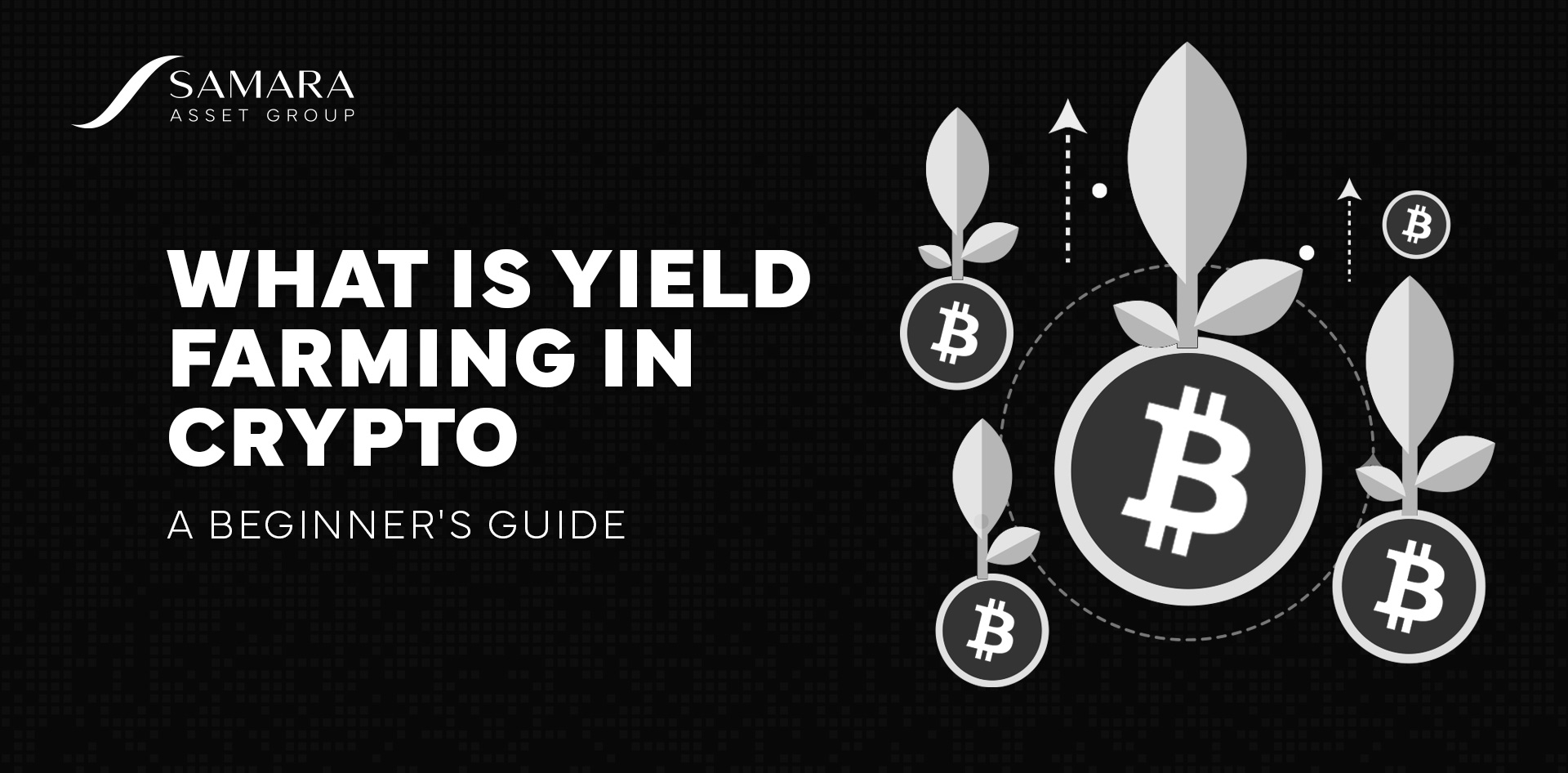Bitcoin
Bitcoin CPI
Venture Portfolio
Funds
Market Insights
Indicators
About
Contact

February 20, 2024





There are billions of dollars' worth of cryptocurrencies locked in decentralized finance (DeFi) protocols, and given increased adoption, it’s likely that the industry’s upward trajectory will continue.
In this guide, you will learn about yield farming, a popular yield-generation approach among risk-loving speculators in the DeFi markets.
Yield farming in crypto is a process where crypto holders can earn rewards by depositing or lending their digital assets into decentralized finance (DeFi) protocols in exchange for rewards.
The rewards they offer are in the form of trading fees, platform tokens, or interest payments. The process is automated using smart contracts, and the lending and borrowing of crypto assets is open to any user with a crypto wallet and an Internet connection.
Through this new incentivization mechanism, billions of dollars in crypto have flown into the decentralized finance ecosystem, enabling DeFi investors to earn above-average yields that are paid out in crypto tokens.
However, yield farming is widely considered one of the riskiest ways to earn investment income in the crypto markets, as the de facto unregulated DeFi market comes with several risks.
Yield farming typically takes place on two types of DeFi protocols: lending and trading.
On DeFi lending platforms that offer yield farming incentives, investors deposit digital assets in smart contract-enabled liquidity pools through smart contracts to collect interest and to receive additional yield farming rewards in the form of the platform’s governance token. DeFi projects lend the locked crypto assets to other parties, including individuals and institutions like crypto exchanges. Once the loan period has elapsed, the borrowers need to return the tokens with interest, and a portion of the interest is distributed among the liquidity providers in addition to protocol tokens that act as an incentive for lenders to deposit funds.
Yield farmers can also earn rewards on decentralized exchanges that deploy automated market-maker protocols to enable autonomous trading. Automated market-maker systems require liquidity in the form of locked tokens to execute buy and sell orders. In such cases, the locked assets generate income from transaction fees. Yield farmers receive liquidity provider fees as well as incentives through newly created tokens and governance tokens.
DeFi protocols mostly attract yield farmers by quoting an expected ROI using an annual percentage yield (APY) that informs investors of the estimated return they can expect when placing their tokens in the liquidity pool. As a rule of thumb, higher APYs will almost always correspond to a greater risk.
The high APYs tend to attract yield-hungry crypto investors looking for the highest-yielding protocols they can find to deposit funds into. As a result, yields compress as more investors move their funds toward high-yielding liquidity pools.
Moreover, yield farming protocols have been plagued with hacks and rugpulls, which has added to the increased risk of this highly speculative crypto investment approach.
Due to the decentralized nature of DeFi protocols that offer DeFi yield farming, there are no intermediaries. As a result, investors are earning directly from their locked assets. Depending on market conditions and the liquidity provider incentives in place, the return on investment from yield farming can be higher than what traditional fixed income investment vehicles can accrue.
In addition to higher yields, users can also earn governance tokens that give them partial ownership of the protocol, allowing them to have a say in what products and services the platform should offer next.
Yield farming can be an attractive option for crypto investors interested in diversifying their portfolios. Instead of just holding, yield farmers put their digital assets to work and earn rewards without actively engaging in trading.
However, it’s important to reiterate that yield farming is a high-risk investment approach, especially when investors are depositing assets in new, unestablished protocols. Despite its similar name, it isn’t comparable to depositing money into a high-yield savings account at your local bank that pays regular interest.
Crypto yield farming and staking are both means for earning investment income paid in crypto tokens, but they come with some subtle differences of which potential investors need to be aware.
Yield farming employs complex strategies that leverage different DeFi platforms and their supported tokens to maximize returns. Yield farming requires active management, constant monitoring of market conditions, and specific strategies, which could include moving between liquidity pools and DeFi protocols.
Staking typically involves participating in a blockchain network’s Proof-of-Stake (PoS) consensus mechanism by “locking up” some of your cryptocurrency in a digital wallet. Participants earn the right to validate the blockchain’s transactions, thereby securing the network. As a result, users are rewarded with a percentage of the blockchain’s transaction fees and newly mined tokens. Alternatively, staking is also possible on DeFi protocols, where you deposit the protocol’s token to receive staking rewards.
Regardless of the type of staking, crypto staking is a lot less complicated than yield farming, making it the more user-friendly method of earning rewards paid in tokens.
In both cases, however, potential returns are highly volatile because rewards are paid out in crypto tokens that are subject to market price fluctuations.
During the DeFi summer of 2020, when yield farming first became available, crypto investors were flocking to yield farming protocols due to its high-earnings potential. However, as mentioned earlier, yield farming also comes with a lot of risks.
Let’s take a look at the risks you need to be aware of should you decide to deploy some of your capital in the DeFi markets.
Crypto yield farming offers opportunities for risk-loving crypto investors to potentially increase their earnings. However, while the potential high-yield rewards and lucrative incentives from these decentralized finance protocols sound appealing, there is a long list of risks investors need to weigh before making the decision to deploy any capital in these types of DeFi protocols.
Investors can make money in yield farming by placing crypto tokens in a DeFi protocol, providing liquidity for different token pairs. In exchange for being a liquidity provider, investors can earn rewards from the platform’s token, expressed as APY. However, there are risks involved that investors need to be aware of before depositing crypto in any yield farming protocol.
No. While yield farming is a potentially lucrative way to earn investment income in the crypto market, yield farming is a highly risky venture that should only really be undertaken by experienced crypto investors who are aware of the risks involved.
DISCLAIMER: The content in this article is for informational purposes only. You should not construe any information in this article as investment advice. Nothing contained in this article constitutes a solicitation, recommendation, or endorsement of any of the financial products or services mentioned. Please speak to your financial advisor before making any financial decisions.